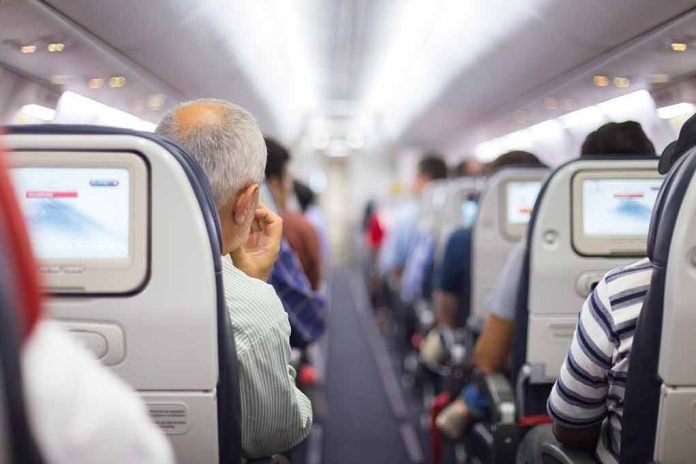
Mastering the art of sleeping comfortably on a plane can transform your travel experience, turning a potentially exhausting journey into a refreshing prelude to your destination.
At a Glance
- Choose a window seat for better sleep opportunities and control over lighting.
- Pack essential comfort items like a travel pillow, eye mask, and noise-canceling headphones.
- Dress in loose, comfortable layers to adjust to temperature changes.
- Avoid caffeine and alcohol, opting for water to stay hydrated.
- Consider adjusting your sleep schedule to your destination’s time zone before the trip.
Selecting the Ideal Seat
The first step to a restful flight is selecting the right seat. Window seats are generally considered the best option for those looking to catch some sleep. They provide a surface to lean against and control over the window shade, allowing you to manage light exposure. Avoid bulkhead, exit row, and last row seats, as these often have limited recline or are close to high-traffic areas.
Once you’ve secured your ideal seat, it’s time to focus on creating a comfortable sleep environment. Dress in layers to easily adjust to temperature changes during the flight. Remove your shoes to improve circulation, but keep your socks on for warmth and hygiene. When it’s time to sleep, sit up straight or recline your seat slightly for better back support, and keep your legs uncrossed to maintain proper blood flow.
Essential Sleep Accessories
Packing the right accessories can make a world of difference in your in-flight sleep quality. A travel pillow that provides proper neck support is crucial. An eye mask can block out unwanted light, signaling to your body that it’s time to rest. Noise-canceling headphones or earplugs are invaluable for drowning out the ambient noise of the aircraft and fellow passengers.
Consider bringing a small, portable footrest to help maintain a comfortable sleeping position. Some travelers find that compression socks can help with circulation during long flights. Don’t forget to pack a light blanket or large scarf to stay warm, as airplane cabins can get chilly.
Pre-Flight Preparation
Preparing for restful in-flight sleep begins before you even reach the airport. In the days leading up to a long-haul flight, gradually adjust your sleep schedule to match your destination’s time zone. This can help minimize jet lag and make it easier to fall asleep on the plane. On the day of your flight, consider showing up slightly sleep-deprived to increase your chances of falling asleep onboard.
Pack comfortable lounge pants, extra socks, and a small pillow in your carry-on for easy access during the flight. Remember to turn off all electronics at least 30 minutes before you plan to sleep, as the blue light can stimulate your brain and make it harder to doze off.
In-Flight Strategies
Once onboard, create a sleep-friendly environment. Close the window shade, turn off overhead lights, and use your eye mask to block out any remaining light. Put on your noise-canceling headphones or earplugs to muffle ambient noise. Stick to a bedtime routine similar to what you do at home, such as brushing your teeth and changing into comfortable clothes, to signal to your body that it’s time to sleep.
Avoid large meals close to your intended sleep time. If possible, opt out of the in-flight meal service to reduce sleep interruptions. Instead, eat a light, healthy meal at least two hours before sleeping to avoid discomfort. Avoiding the intake of caffeine and alcohol may also help, as these can disrupt your sleep patterns.
Set an alarm for about 45 minutes before landing to give yourself time to wake up gradually and prepare for arrival. Once you reach your destination, try to stay active and get some light exposure to help combat jet lag and adjust to the new time zone. With these strategies in place, you’ll be well-equipped to turn your flight into a restful experience, arriving at your destination refreshed and ready for adventure.
Sources
- Want to sleep better on your next flight? Follow these 13 tips
- How to Sleep on a Plane, According to Experts and Frequent Travelers
- How to Actually Sleep on an Airplane













